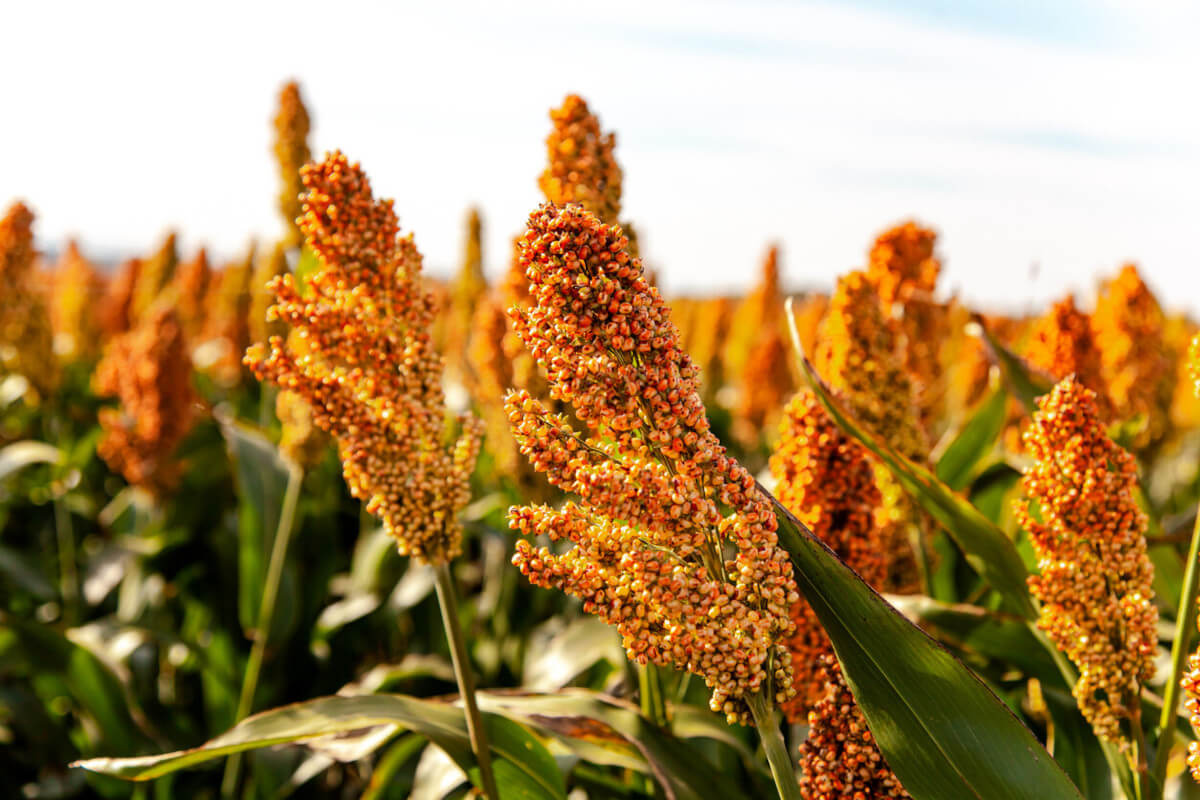Insight Focus
Sorghum is an ancient crop, but more and more uses are being found for it. While it remains a good source of animal feed, it is also being increasingly used in renewable fuel production and in the alcohol brewing industry. We explain the basics of sorghum production, use and trade.
What is Sorghum?
Sorghum is a grain that was first discovered in northeastern Africa, on the Egyptian-Sudanese border. Because the grain is gluten free, it is now commonly used in products for those with celiac disease or gluten intolerance.
However, it has been traditionally used as food and animal fodder. Common uses of sorghum include as cattle and poultry feed, as well as in the alcohol brewing and distillery industry. It can even be used to make fuel ethanol.
After its discovery in Egypt and Sudan, the grain soon spread across Ethiopia and then further afield – to India and China and even as far as Australia. Today, sorghum is produced all around the world, including in the US.

Sorghum as Animal Feed
One of the most common uses of sorghum is for animal feed. Not only is it low-cost for livestock farmers, but sorghum has health benefits for the animals, including low levels of tannins and mycotoxins. Tannins are generally considered to be unhealthy as they can inhibit proper digestion and impact absorbency of other vitamins and minerals. Mycotoxins come with a variety of adverse health impacts.
In a nutshell, sorghum’s nutritional values are very similar to corn, with slightly higher protein and energy values, making the crop ideal for animal feed.
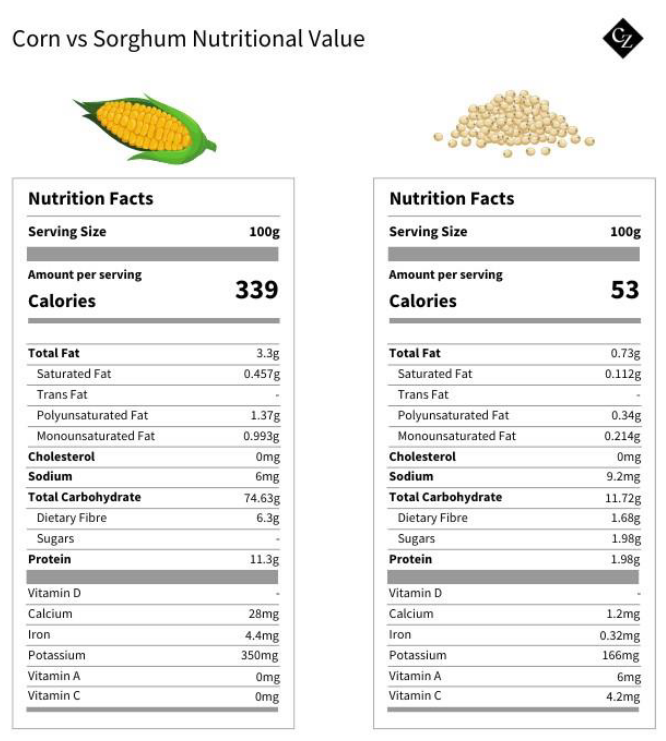
Sorghum can also be used for grazing, fodder or for silage and hay, making it an economically friendly purchase for livestock farmers.
Sorghum as Fuel
Sorghum and corn are almost interchangeable when it comes to producing fuel ethanol. Use of sorghum as a feedstock for ethanol is most common in the US, Australia and some South American countries, where it grows abundantly. In the US, almost 30% of sorghum grown is used to produce renewable fuels.
Not only does sorghum yield the same amount of ethanol per bushel as corn, but it also tends to use less water during the process.

Sorghum as Food
There are more and more uses for sorghum in food, given it provides a great source of iron, fibre and protein. It also contains a host of antioxidants. It can offer texture in cereal and granola bars as it has a firm but chewy consistency.
It also can be turned into flour. Sorghum flour is particularly popular among those with celiac disease since it contains no gluten but can still create baked goods such as breads, pancakes and muffins.
Sorghum grain can also be cooked directly on a stovetop or slow cooker. It is often used in the same way as quinoa or couscous – in salads, rice bowls, soups or as an alternative to rice.
Only a small proportion of sorghum in the US is used in food, and the proportion tends to fluctuate greatly.
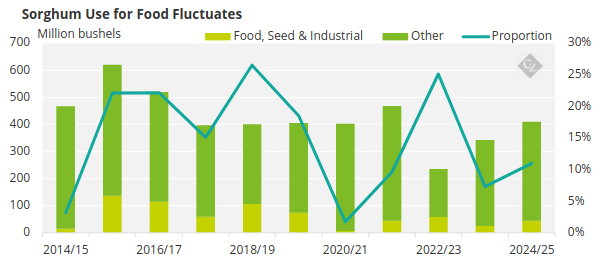
Source: USDA
Sorghum Production
Over the years, sorghum production has risen only marginally around the world. After a rapid scale up from 40 million tonnes in the 1960s to about 70 million tonnes in the 1980s, global production levels have plateaued at about 60 million tonnes.
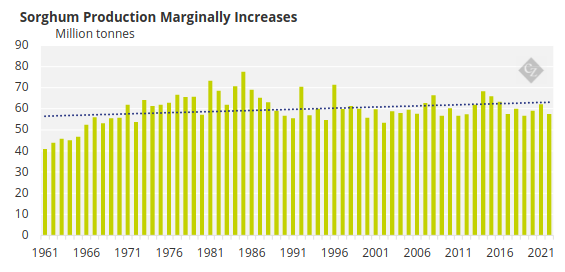
Source: FAOSTAT
The largest global sorghum producer has consistently been the US. Unsurprisingly, it is also heavily cultivated in the countries in which it originated, such as Nigeria, Ethiopia and Sudan.
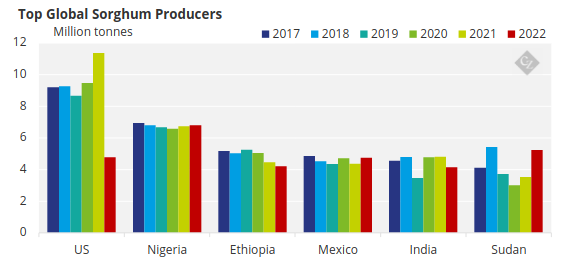
Source: FAOSTAT
Sorghum is a very hardy crop, thriving in the hot climates of Northeastern and Western Africa. It also can withstand poorer soil quality than most crops and is known to be drought-tolerant, making it a relatively low-cost and reliable crop to cultivate.
Sorghum Consumption
Sorghum consumption has also plateaued in the past 20 years or so at around 60 million tonnes.
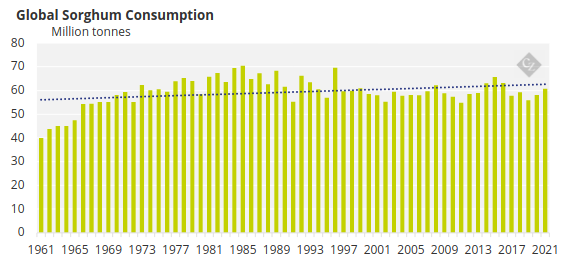
Source: FAOSTAT
Production from year to year is volatile and some years production does not keep up with demand. But in years when production is plentiful, stocks are more than enough to cover consumption.
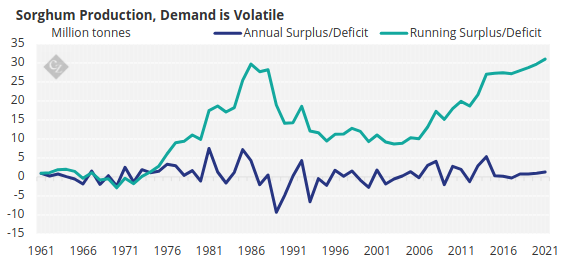
Some of the biggest consumers of sorghum are the countries where the crop is produced. As can be expected from a crop that is primarily used as animal feed, the biggest consumer of sorghum is China.
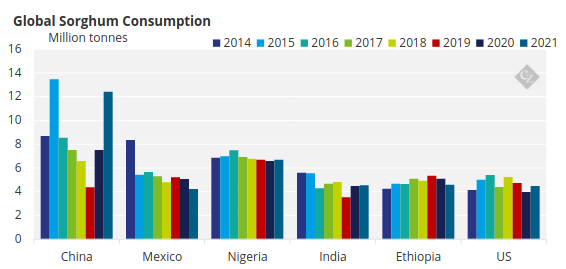
Source: FAOSTAT
China has huge herds of livestock to feed its growing middle-class population that is demanding more and more meat.
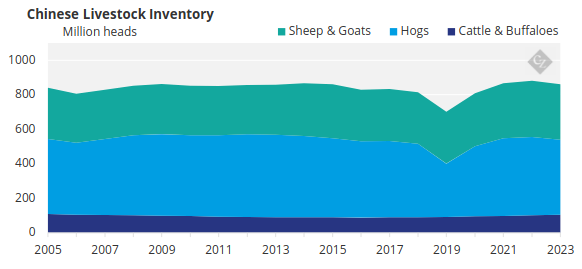
Source: China Statistics
It is also used to produce baijiu – a popular grain alcohol in China.
Global Trade
As the largest sorghum producer, it should come as little surprise that the US is the largest exporter, followed by Australia and Argentina.

Source: UN Comtrade
In fact, the US consistently exports the bulk of its production.

Source: USDA
And as a major sorghum consumer – but not one of the major producers – China is obviously a major importer. Other key importers include Spain, Japan and Kenya.

Source: UN Comtrade
Would you like to know more about the sorghum market? If you’d like to discuss your sorghum procurement needs, contact us.

